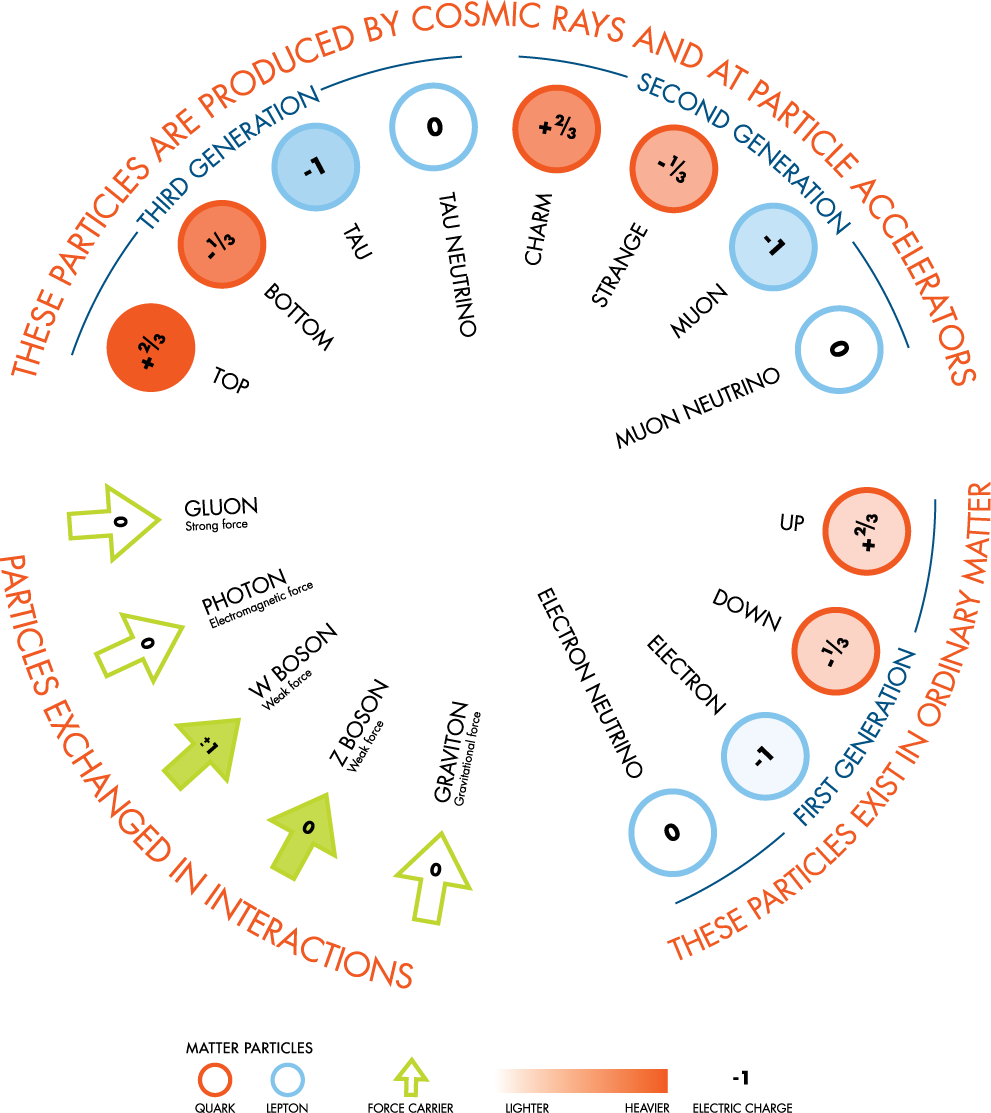Building blocks
A particle is a microscopic object that may be characterised in terms of its position, its velocity, and its physical properties, for example mass and electric charge. A particle is said to be fundamental if it cannot be broken down into smaller pieces, or otherwise is composite. The fundamental particles are force carriers, quarks or leptons. Force carriers transmit four types of force. These are the strong force, experienced by quarks but not by leptons; the weak force, experienced by leptons as well as quarks; the electromagnetic force, experienced by particles with non-zero electric charge; and the gravitational force, experienced by particles with non-zero mass.
The substance that makes up any gas, liquid or solid found on Earth is referred to as matter. All known matter is built from just three types of fundamental particle: the down quark, the up quark and the electron. Together with the electrontype neutrino, which plays an important role in radioactive decay, these form the fi rst generation of matter particles. Two other generations of matter particle are known. Each consists of two quarks and two leptons, and is essentially a replica of the first generation, but with higher mass. The highermass matter particles would have been present in the early Universe, but today are produced only in the interactions of cosmic-ray particles and at particle accelerators. They survive for only a fraction of a second.
For each matter particle there is a corresponding antimatter antiparticle, having the same mass but oppositely signed electric charge. Quarks and antiquarks have never been detected in isolation, but are confi ned in composite particles known as hadrons. These may consist of three quarks (baryon), three antiquarks (antibaryon) or a quark-antiquark pair (meson).
Particles behave as if they're spinning about an axis. Quantum mechanics only allows spin values equal to a base unit, written ℏ, times n/2, where n is a non-negative integer. Particles for which n is odd obey statistical laws developed by Enrico Fermi and Paul Dirac, and are known as fermions. Particles for which n is even obey statistical laws developed by Satyendra Bose and Albert Einstein, and are known as bosons. Quarks, leptons, baryons and antibaryons are all fermions. Force carriers and mesons are all bosons. The differences in behaviour between fermions and bosons are crucial to the way in which the Universe has developed.








